
Hoverflies, also called flower flies or syrphids, make up the insect family Syrphidae. As their common name suggests, they are often seen hovering or nectaring at flowers; the adults of many species feed mainly on nectar and pollen, while the larvae (maggots) eat a wide range of foods. In some species, the larvae are saprotrophs, specifically detritivores, eating decaying plant and animal matter in the soil or in ponds and streams. In other species, the larvae are insectivores, preying on aphids, thrips, and other plant-sucking insects.
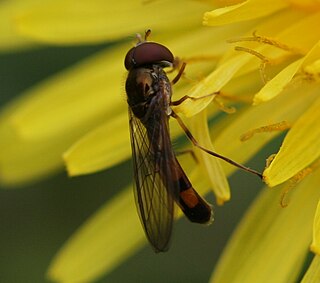
Melanostoma scalare, the chequered hoverfly, is a very common species of hoverfly.

Melanostoma mellinum is a very common species of hoverfly found in many parts of Britain, Europe including the Mediterranean basin and North Africa, the East Palearctic, and North America.

Baccha elongata is a species of hoverfly in the genus Baccha.

Platycheirus manicatus is a species of hoverfly. It is found across the Palearctic and in Alaska.
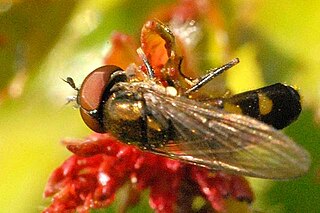
Platycheirus splendidus is a species of hoverfly. It is found in many parts of Britain and Europe.
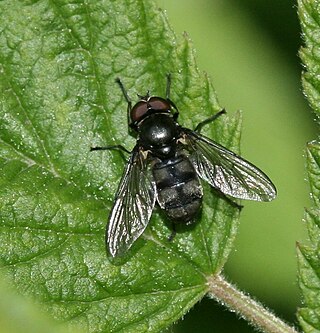
Portevinia is a genus of hoverflies. There is only one European species - P. maculata.

Lejogaster is a genus of small, shiny, metallic hoverflies.

Riponnensia is a genus of hoverflies.

Pipizini is a tribe of small to medium-sized generally black hoverflies, although some species also have orange spots on their abdomen. This nondescript colouring can lead to some species being confused with other dark hoverflies from other tribes. The lack of a facial knob is a good defining feature which separates them from most of these other hoverflies. As with other species in the subfamily Syrphinae the larvae feed on aphids though there seems to be a preference for wax-secreting aphids e.g. Pemphigidae.

Lejops vittatus is a European species of hoverfly.

Platycheirus ambiguus is a small widespread species of hoverfly found across the Palearctic from Ireland to Japan. A spring species found in flight in April and May, it visits spring-flowering trees and shrubs, e.g., Prunus spinosa in deciduous woodland and scrub.
Platycheirus nielseni is a Holarctic species of hoverfly.
Platycheirus ramsaerensis is a Palearctic species of hoverfly. It is found along the parts of northern Europe that face the Atlantic. It is a member of the Platycheirus clypeatus group

Platycheirus sticticus is a species of hoverfly. It is found in many parts of Europe across to Siberia.
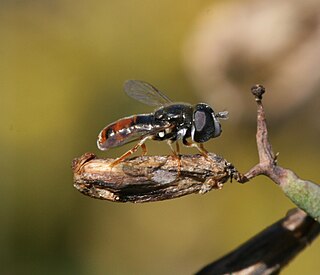
Paragus tibialis, is a species of hoverfly found in many parts of Europe and North Africa. It has a preference for drier areas and its larvae feed on root aphids.
Paragus constrictus is a species of hoverfly. It is found in Southern Sweden and Denmark, Ireland, Spain, Germany, the French Alps, Switzerland, Austria, Italy, Yugoslavia and Turkey and Russia east of the Urals. This species may be distinguished from Paragus tibialis only by the shape of the male parameres. In both sexes it shares with P. tibialis the character of entirely pale-haired abdominal tergites, so it is distinct from Paragus haemorrhous which has dark hairs. Images representing Paragus constrictus
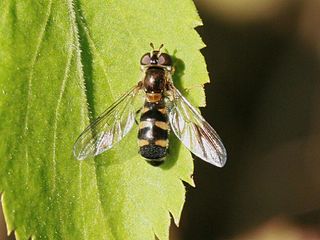
Meligramma triangulifera is a European species of hoverfly. It was described by Zetterstedt in 1843.
Epistrophe diaphana is a European species of hoverfly.

Sphegina elegans is a species of hoverfly.















